I have always had an eye for sports cars, particularly German, Italian, and British motors. Growing up, they remained out of reach and a pipe dream, like posters on a teenage boy’s wall. Still, I collected photos of exotics from the internet and dreamed. Then, a few years ago, I learned the BMW Z3 roadster is not only surprisingly affordable, but quite fun and reliable. After a few weeks of searching, I found one about a hundred miles away with super low miles – a genuine barn find, in great condition. I took the plunge, and within days it was delivered to my driveway. It wasn’t a Ferrari, but with the top down, and a stab to the accelerator, I quickly found that it got me there. It was what I needed. My sports car dreams were now as real as they needed to be.
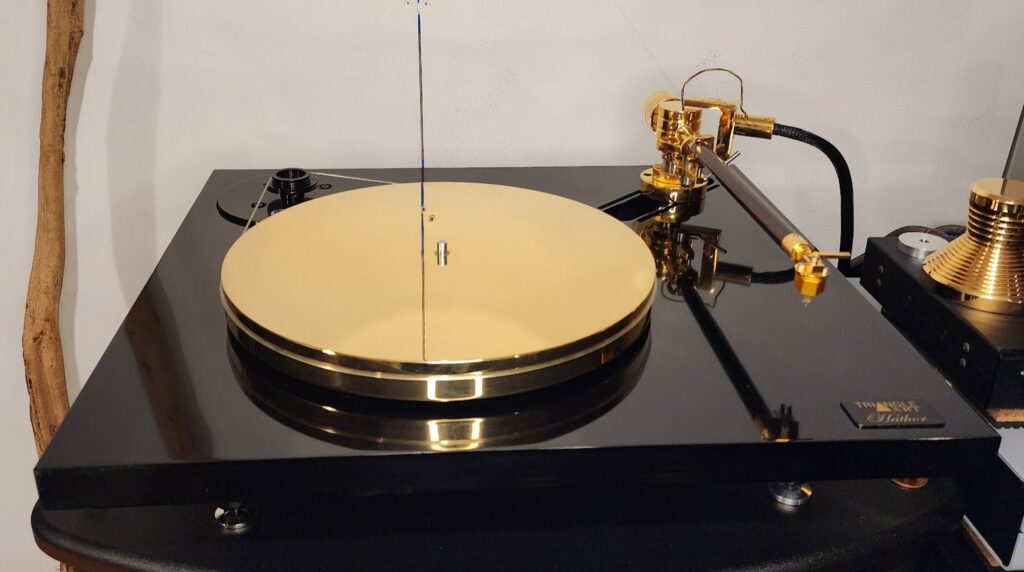
When I set out to create The Shoestring Audiophile, and writing about hi-fi, it was with the intention of what gets me, and all of us, there. By that I mean, what gets us audiophiles on a modest budget closer to the sound that we hear in high-end music stores, at audio shows, and from friends’ systems that we envy. In doing so, I have tested and tried everything imaginable, cable-swapped until daybreak, and strived to find lower cost gear.
Hold the phone… Before we even go any further, how does a turntable package that adds up to almost $15,000 fit into this scenario? Very simply, as you’ll soon see!
Triangle Art
My first encounter with Triangle Art was at AXPONA several years ago, in a room with their Ultimate LE 2 model turntable, along with their tube preamp and a gorgeous pair of Eggleston loudspeakers. For reference, the LE 2 starts at $129,000 before anything is added to it, such as tonearms. It was the most mesmerizing room of the show that year – it was the “poster on the wall” moment for me. And so, the pipedream began, as did my affinity for Triangle Art. However, it didn’t stop there. In the next room, their Master Reference SE turntable ($39,000 before tonearm or cartridge) furthered my interest in the brand and belief that these remarkable players were as out of reach as a Ferrari.
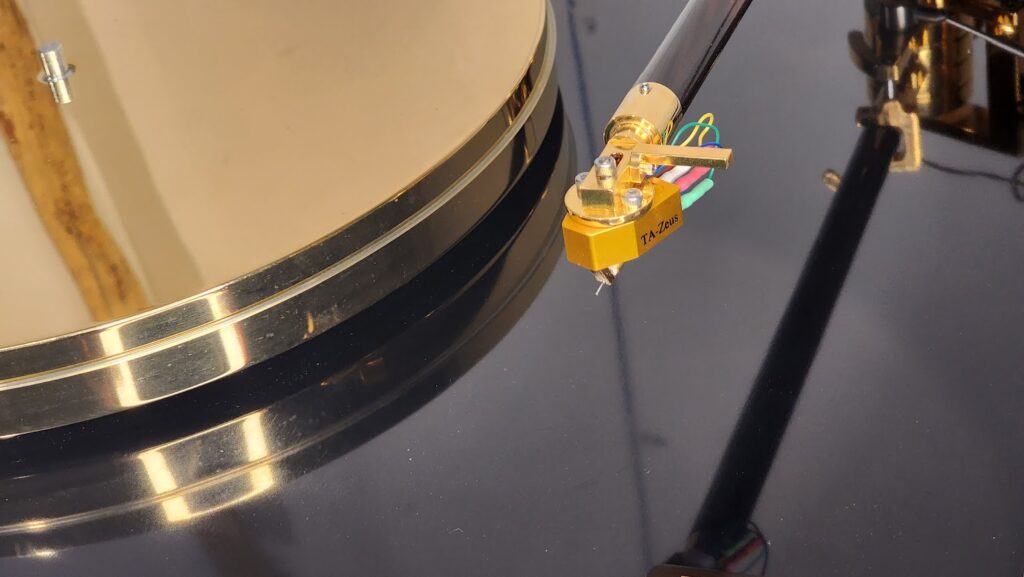
The Hathor- What It Is
The Hathor is the entry level turntable in the Triangle Art line, priced at $4000. Made to fit a variety of tonearms, currently it is offered with the 9” Horus, available in chrome or gold. My demo unit shipped with the gold unit finish at $4,800 (please contact Triangle Art for additional tonearm information). The Zeus MC cartridge fitted to the turntable (professionally) is a $4,800 option. I also opted for the TA-1 clamp at $1,200. More on that later.
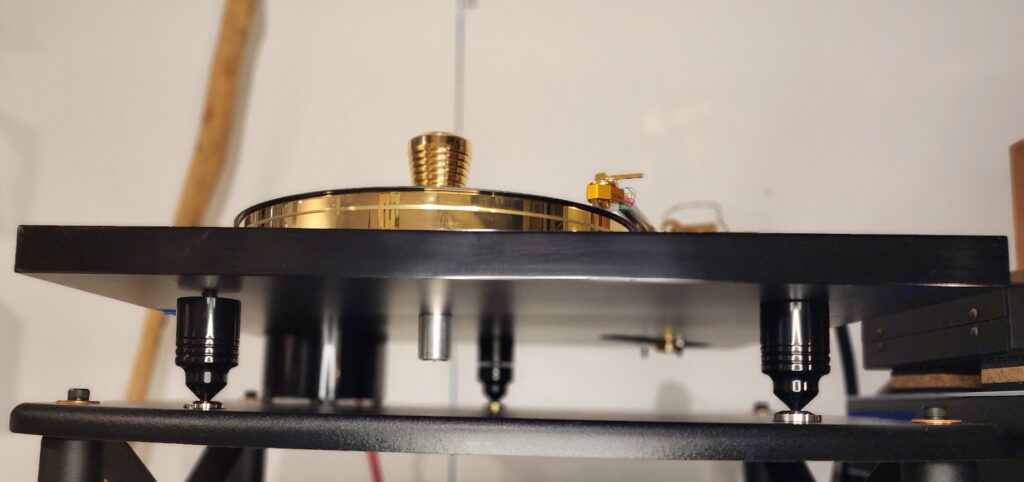
As the Hathor comes fully disassembled, in a wood crate and boxes, I had a chance to see each piece as a separate unit. The 1” thick composite plinth is one of the heaviest objects I have ever lifted out of a container and immediate proof that the Hathor means business. The AC motor sat somewhere in the bottom of the crate – another weighty bit of machinery. On the other end of the spectrum, the Horus tonearm had the feel of laboratory equipment as I freed it from the foam packaging. Light, delicate, and precise, there was nothing at all that caused me to question its value.
The platter is also available in either gold or silver. Again, my demo model came in gold. The finish of all parts is jewelry-quality, making an elegant and striking statement in the listening room. On the bottom are three adjustable legs for leveling the Hathor once everything is in place.
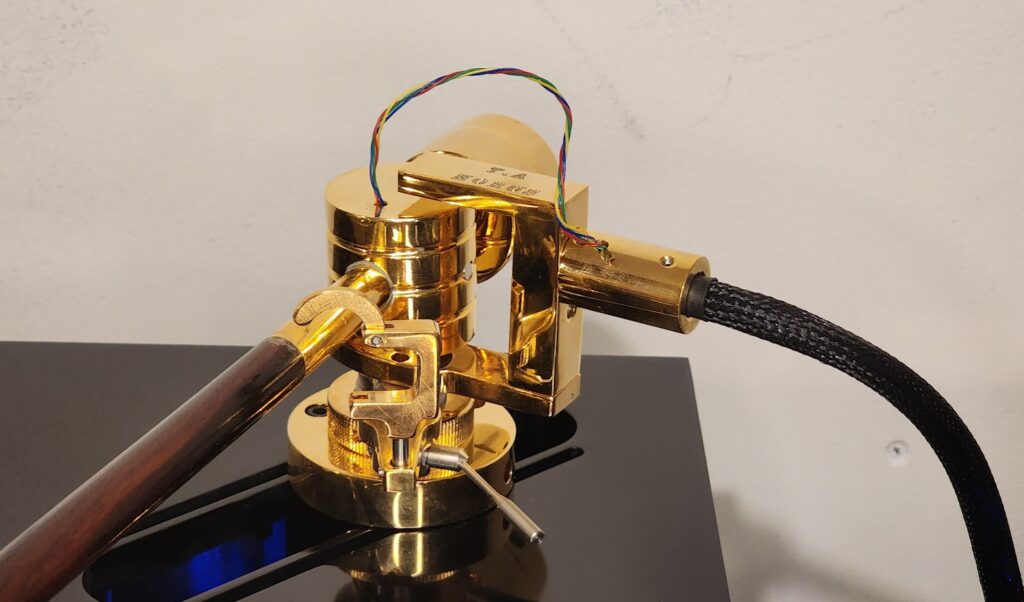
There are some turntablists that will take on the task of setting up their own players. I am not one of those. For that, I refer to a highly skilled professional, in this case, Brian Walsh of TT Setup. He has worked on nearly all my ‘tables with stellar results. As the arm needs to be precisely placed, azimuth correctly adjusted, overhang set, and anti-skating setup, I was happy to have the Hathor in his capable hands. After approximately three hours of assembly, scoping, and work, Mr. Walsh turned the Hathor over to me.
Mr. Walsh added these comments after the setup:
A while ago I assembled and set up Michael’s Tri Art turntable, tonearm, and cartridge. I encounter a full range of turntable systems and enjoy a challenge when it comes along. Michael’s was mostly straightforward.
The first thing I do is level the turntable, or more correctly, the platter. Most are reasonably so, but you might be surprised. It’s important so the tonearm and of course the cartridge are not affected by gravity upon tracking and antiskating, to minimize distortion and noise.
With the cartridge installed, the arm height is set so the arm tube is parallel to the platter, allowing for typical record thickness. As needed the azimuth (angle from viewing the cartridge from the front) is adjusted so it is level. The tracking force is set in the recommended range. Then the cartridge overhang and offset angle are carefully set using a good protractor – I prefer the SMARTractor due to its accuracy, but there are other viable choices. The offset angle is based upon the cantilever lining up with the parallel lines on the protractor, which may or may not line up with the cartridge body. The tracking force is then set more precisely as recommended. Antiskating force is set, often at the minimum but adjusted to minimize its effects upon performance and other measurements to be taken.
The laptop computer and related cabling and accessories are connected to the phono preamp outputs and levels calibrated. Following that, various measurements are taken:
– Azimuth. Crosstalk and phase response levels at various azimuth angles are used to optimize performance. When a tonearm doesn’t have such adjustments I use small amounts of materials between cartridge and headshell, which makes the process much more labor intensive but produces the desired results. Cartridges are built by hand and are subject to variations.
– Speed adjustment. Speed accuracy is measured at 33 1/3 and 45 rpm and adjusted where possible.
– Resonant frequency of cartridge/tonearm and tonearm are measured to see performance and any issues.
– Harmonic distortion of cartridge is measured.
The following parameters are optimized:
– Antiskating force, to minimize distortion. The amount needed varies by the tonearm and the cartridge. Too much or too little can affect stylus life and record wear.
– Vertical tracking angle/stylus rake angle. Start with the arm tube close to parallel to the record. A stylus rake angle recommended by some to be 92 degrees should only be used as a guide. Use your ears to adjust it for best tonal balance and focus, or if available, start with distortion measurements by computer. One thing to be mindful of is that vertical tracking force varies with VTA, so be sure to go back and check it.
– Vertical tracking force. Fine tune it by ear for best focus and pitch, or by computer to minimize distortion if you can. Note that after break in, you may want to adjust tracking force a bit once the suspension relaxes. You might find reducing the force by a few hundredths of a gram will help.
The net results of all this are dramatically lower noise and distortion, improved imaging and a lot more cohesive, fuller sound with a wider, deeper soundstage, and just more fun listening.
A proper 50 hours of burn-in time was given to the Zeus cartridge before I began to do my critical listening. During that, two different phono stages were auditioned before I landed on the PS Audio Stellar phono preamplifier as being the optimum results. Gain is set at medium, loading at 100.
Listening
Since I’ve had the Hathor set up in my listening room, the opportunity has arisen to demo it to several audiophiles, music fans, and friends. It has never failed to leave people flabbergasted. Of any single piece that has been in my space here, perhaps the Hathor has wowed more than any that I have had the chance to set them in front of. Though I have played a few choice cuts, continually, there is one I return to. That song is “San Jacinto” from Peter Gabriel’s Plays Live double album. It’s entertaining to stand at the side of the room and observe the listener sitting on my sofa as the song progresses. Invariably, the listener will look around the room. At that point, I will remind them that this is a two-channel system. This is where I will also begin with my listening here, as I feel it is the best place to start.
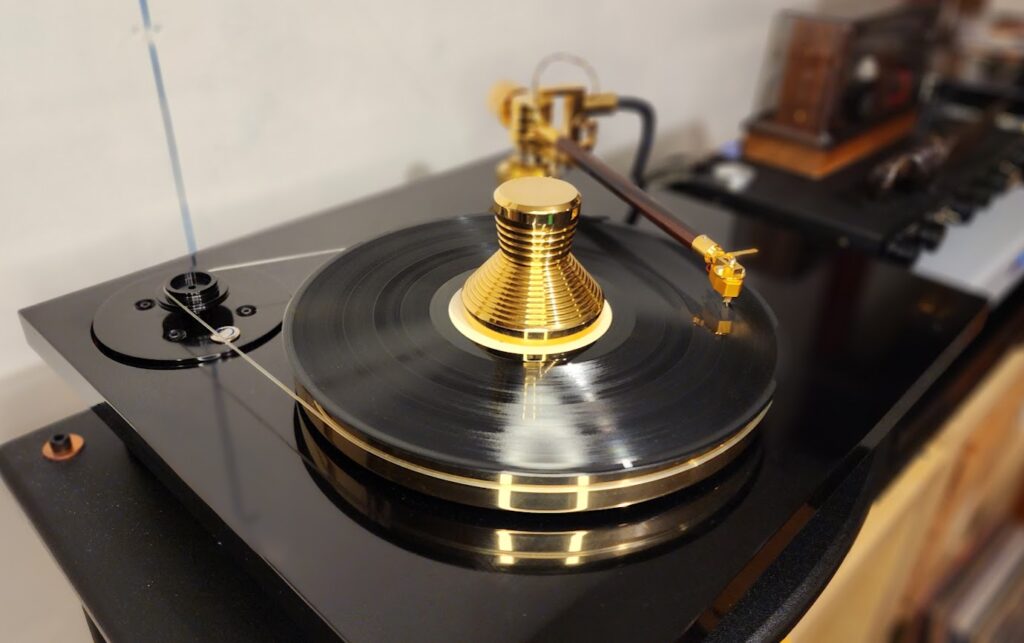
From the initial landing of the stylus onto the record, and for those first few run-in seconds, the Hathor is perfectly silent. With this record having been ultrasonically cleaned, there is no noise from the record or the turntable. Perfect isolation from the motor and surroundings.
As “San Jacinto” leads in, there is the roar of the crowd, a “thank you” from Gabriel, and keyboards that bounce back-and-forth which propel higher and dance around the environment. Kick drum hits the chest. Vocals emanate from the entirety of the wall. Tony Levin’s bass pulses, bringing power along with the instrument. The chorus climbs into a crescendo, then drops into bass notes. As it does, the Hathor transfers every element of this live performance as eloquently as any turntable or playback device that I have heard at any price-point. I am there, in my own listening room.
Switching over to a half-speed mastered pressing of Santana’s Zebop! release, the Zeus cartridge opens up, demonstrating incredible articulation with acoustic guitars and Latin percussion. On the opening track, “Changes,” the focus is sharp, and dynamics are through the ceiling. There is nothing here that feels like I am listening to anyone’s “entry-level” product, but instead, a true audiophile turntable in every imaginable aspect.
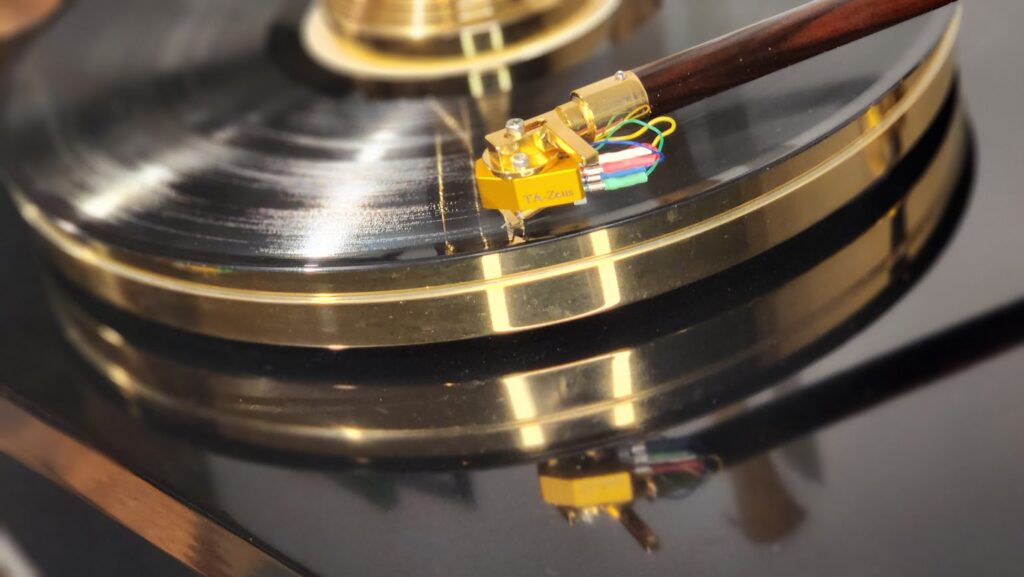
Finally, I listen to and audition Steely Dan’s Aja, in particular, “Black Cow,” three different ways- first without a record weight at all, then with a $20 weight from eBay, and then with the Triangle Art weight.
Without any weight at all, this is enjoyable, a great foundation to work from. The bass is round, large, and maybe a bit more than what I’m used to from this record.
With the $20 weight in place, the rounded bass becomes considerably more defined immediately. I am hearing the runs in the bass line rather than just being a little overrun by it. Score one for the eBay weight.
With the Triangle Art weight, which is actually more of a clamp, not only is the bass defined, but it is as tight as a drum now. This is a marked difference that yes, anyone could hear. In fact, I would be concerned if you could not hear this difference. While the Triangle Art weight is an expensive option, what it accomplishes as a part of the overall package cannot be dismissed.
Wrapping It Up
The Hathor, with the gold platter and gold Horus tonearm, has certainly garnered its share of fans since it has taken up residence in my listening room. At first, this is based on the striking and elegant appearance of the turntable, a standout in a system of high-end gear. However, those who have had the opportunity to audition the Hathor have had the same response that I have had each and every time I listen – this turntable is beyond something special, and is that piece that gets us dangerously close to the stratospheric equipment we dream about. It is the fulfilment of the poster on the wall. It is our attainable Ferrari.
Front Page
Brian Walsh, TT Setup, Barrington, IL
773-809-4434
http://ttsetup.com/